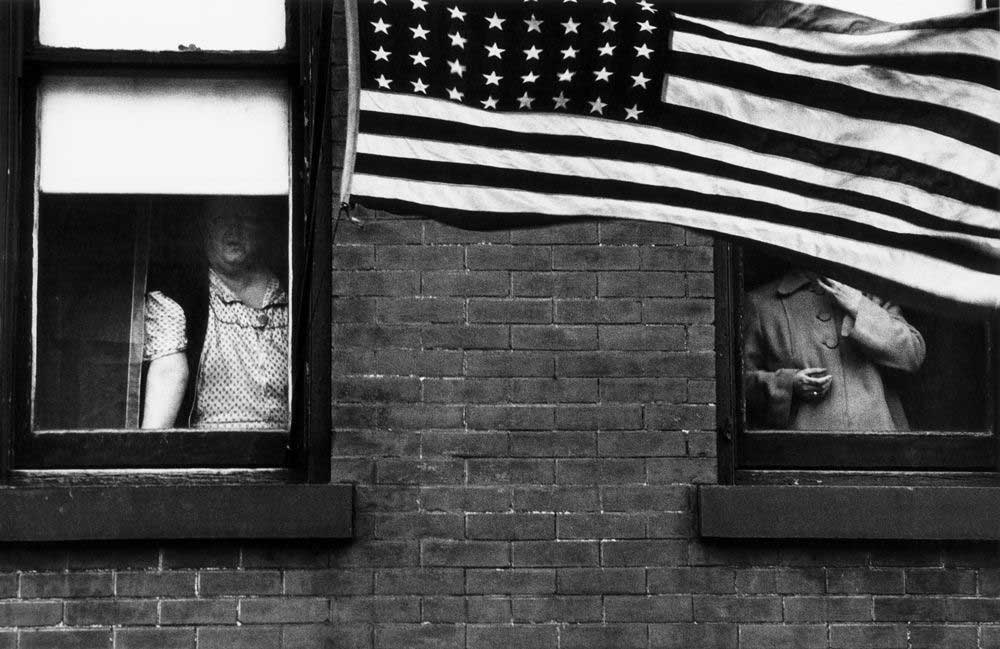No doubt, “The Americans” is the greatest work of Robert Frank is an undeniable fact, not only it became one of the most influential books in the photography history, but it reinvents completely the way you look and tackle any photographic project building the pillars of the new documentary photography.
In the mid-1950s the panorama of documentary photography makes a 180 degree turn. This Swiss photographer travels 10,000 miles through the United States. His name was Robert Frank.
Robert Frank was born in Zurich (Switzerland) in 1924, the second brother of a Jewish family with money and resources for setting in the republic after the First World War disaster. At age 23 he moved to New York and found work as a fashion photographer at Harper’s Bazaar.
A few years later, with a Leica 35mm, a Ford Business Couple paid with a scholarship received by the Guggenheim Foundation, 800 reels and around 27,000 images taken by Robert Frank for two years rewrote all the photographic documentalism rules in a work that would not leave anybody indifferent.

“The Americans”, a project hated by some and admired by others, was undoubtedly a work that had a huge impact on society after its publication in 1958. Although it was a genuine failure initially, over time, The Americans became the masterpiece of Robert Frank.
When the photographer Robert Frank presented his editors with the images of a worn-out America, obsessed with money, divorced from the Hollywood stereotype and incompatible with the great American dream, the project was rejected immediately, and the Guggenheim Foundation withdrew the initial grant and all form of support.
Robert Frank returned to Europe, where the French editor Robert Delpire agrees to publish the project after selecting together 83 photographs, some intense, others seemingly harmless, but when combined with each other he gets a brutally honest result, which would make up the final work and become in one of the best documentary photography books of the XX century. Robert Frank is accused of anti-American and anti-photographer by all professionals although his project is of exceptional quality. The book “The Americans” shows us the post-war American daily life from a strongly pessimistic perspective and with a point of view agitator for the American public. Professionally he was accused of committing all kinds of photographic errors such as sweeps, excessive grain or misaligned geometries. Even so, all this would form the visually unique vocabulary that would mark the unmistakable style of Robert Frank that would manifest a new way of understanding documentary photography, where the opinion and criticism of the photographer end up imposing itself on reality itself.
There is one thing the photograph must contain, the humanity of the moment. This kind of photography is realism. But realism is not enough – there has to be vision, and the two together can make a good photograph.
Although the theme of Robert Frank was not new, his visual narrative and his point of view were devastating and radically different from anything seen until then. “The Americans” is a true x-ray of American society in the middle of the last century revealing the deep social tensions, the differentiation between rich and poor, racism, consumerism, decadence, but also sadness, melancholy, loneliness and the most visible bitterness and boredom of a society that did not seem feeling observed by Robert Frank’s camera.
Robert Frank, Swiss, discreet, kind, with that little camera that lifts and shoots with one hand; he can extract the sad poem of America, making himself a space among the tragic poets of the world.
[Jack Kerouac – Prologue “The Americans”].






